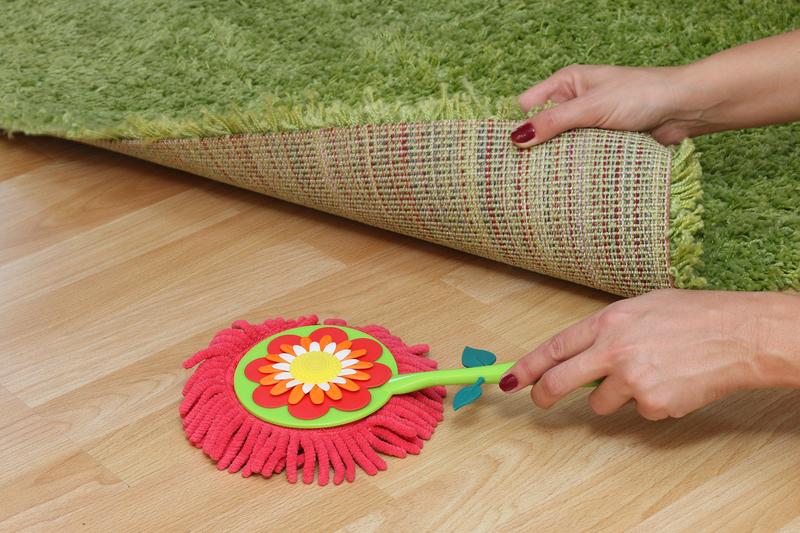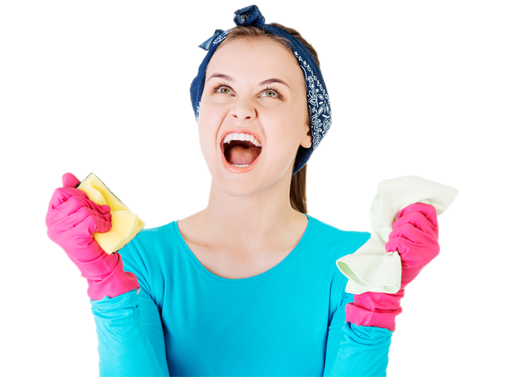Unlock the Secret to a Residue-Free Stovetop Surface
Posted on 12/06/2025
Unlock the Secret to a Residue-Free Stovetop Surface
Are you struggling to achieve a sparkling, residue-free stovetop surface in your kitchen? You're not alone. Maintaining a pristine stove can seem impossible with daily cooking, accidental spills, and stubborn grease buildup. However, with the right techniques and knowledge, you can reveal the true shine of your stovetop and keep it spotless longer than ever before. This comprehensive guide will help you unlock the secret to a residue-free stovetop surface using effective cleaning strategies, expert advice, and sustainable habits.

Why Is a Residue-Free Stovetop Important?
A clean stove isn't just about aesthetics. Here are a few compelling reasons to maintain a residue-free stovetop:
- Health & Safety: Food residues and grease can harbor bacteria and even attract pests.
- Appliance Longevity: Grease buildup can cause long-term damage to stovetop components.
- Improved Cooking: A clean surface ensures even heat distribution and prevents unwanted flavors.
- Easy Maintenance: Frequent light cleaning reduces the need for harsh chemicals and elbow grease.
- Enhanced Kitchen Appeal: Your kitchen will always look inviting and professional.
Understanding the Types of Stovetops
The secret to a residue-free stove starts with knowing your appliance. There are several types of stovetop surfaces, each requiring different care:
- Gas Stovetops: Feature burners and grates, prone to food spills and grease buildup.
- Electric Coil Stoves: Have removable coils and drip pans, susceptible to burnt-on residue.
- Glass or Ceramic Stovetops: Elegant and modern but can scratch easily and show streaks if not cleaned properly.
- Induction Stoves: Smooth and easy to clean, but sensitive to harsh scrubbing or chemical cleaners.
Each type benefits from specific cleaning methods to achieve that perfect residue-free finish.
Common Causes of Stovetop Residue
To maintain a residue-free stovetop, it's crucial to understand what causes grime and buildup:
- Boil-overs from soups, sauces, or pasta water.
- Splattering oil during frying or sauteing.
- Overflowing pots or pans.
- Sugar spills and acidic foods that burn quickly.
- Neglecting regular cleaning, which allows small stains to harden into sticky residue.
The Ultimate Step-by-Step Guide to a Residue-Free Stovetop Surface
1. Gather the Right Cleaning Tools
Before you begin, arm yourself with the right supplies to make the task easier and more effective:
- Microfiber cloths or soft sponges
- Baking soda, white vinegar, or gentle stovetop cleaner
- Razor scraper (for glass/ceramic tops only)
- Old toothbrush for crevices
- Warm water in a spray bottle
- Optional: Lemon juice, dish soap, or specialized stovetop cleaning sprays
2. Daily Maintenance: The Foolproof Prevention Strategy
In the quest to unlock the secret to a residue-free stovetop, consistency is key. Here's how daily maintenance helps:
- Wipe spills immediately with a damp cloth or sponge before they harden.
- Use a gentle degreaser or diluted dish soap to clear away fresh splatters.
- Avoid using abrasive pads that can scratch or dull the surface.
- Keep a microfiber cloth near your stove for quick interventions.
Tip: Schedule a quick wipe-down after each cooking session for sustained cleanliness.
3. Deep Cleaning Techniques by Stovetop Type
For a residue-free finish, adopt the correct cleaning technique for your particular stovetop:
Gas Stoves
- Remove grates and burner caps; soak them in hot, soapy water for 15-30 minutes.
- Scrub gently with a sponge or brush to loosen stubborn residue.
- Use a mixture of baking soda and water to make a thick paste for hardened spots.
- Wipe down the stovetop surface with a damp microfiber cloth.
- Allow all parts to dry fully before reassembly.
Electric Coil Stoves
- Unplug coils and remove drip pans.
- Clean drip pans with hot, soapy water and scrub away buildup.
- If necessary, use a baking soda paste for tough residue.
- Wipe the stovetop area with a damp cloth and gentle cleaner.
- Replace all parts when dry.
Glass, Ceramic, and Induction Stoves
- Allow the surface to cool completely.
- Spray with equal parts white vinegar and water; let sit for several minutes.
- Sprinkle a thin layer of baking soda over stains for added scrubbing power.
- Wipe gently with a soft sponge or microfiber towel.
- For stuck-on residue, use a razor blade or scraper held at a 45-degree angle--gently and cautiously.
- Buff dry with a fresh microfiber cloth for a streak-free shine.
Pro Tip: Avoid commercial cleaners with harsh chemicals that can etch or dull glass and ceramic cooktops.
4. Natural and DIY Cleaners for a Residue-Free Stovetop
If you prefer eco-friendly solutions, try these DIY cleaning recipes:
- Lemon & Baking Soda Cleanser: Sprinkle baking soda over stains, rub with half a lemon, then wipe clean.
- White Vinegar Spray: Fill a spray bottle with equal parts vinegar and water. Mist over surfaces and wipe clean for grease removal and shine.
- Baking Soda Paste: Mix baking soda and water to form a paste. Apply to residue, let sit for 10 minutes, then wipe or scrub off.
These gentle yet effective cleaners help preserve your stovetop's finish while achieving a deep clean.
5. The Power of Steam Cleaning
Steam can loosen tough, baked-on residue without harsh chemicals. If you have a handheld steam cleaner, use it for:
- Grime around burners or controls
- Sticky residue on glass or ceramic surfaces
- Sanitizing without chemical residue
Maintaining a Residue-Free Stove: Habits for Lasting Cleanliness
Unlocking the secret to a residue-free stovetop is not just about one-time cleaning--it's about developing habits:
- Use splatter guards when frying or cooking sauces.
- Wipe up drips and splashes as soon as possible.
- Clean burner grates/trivets at least once a week.
- Inspect and clean drip trays or pans regularly.
- Schedule a deep cleaning session at least once a month.
Consistency is the ultimate secret weapon against relentless residue!
Stovetop Cleaning Myths Debunked
There are plenty of stovetop cleaning misconceptions. Let's debunk a few:
- Myth: Bleach is the best stovetop cleaner.
Truth: Bleach is too harsh for most stovetops and can damage surfaces or cause discoloration. Use mild, non-abrasive cleaners. - Myth: More scrubbing equals better results.
Truth: Aggressive scrubbing can scratch and dull glass, ceramic, and enamel. Use gentle yet effective products and techniques. - Myth: Commercial cleaners are always safe.
Truth: Some commercial cleaners have strong chemicals that leave residues or damage modern stovetops. Always check your manufacturer's instructions.
Best Practices: Tips for a Long-Lasting, Spotless Stovetop
- Read Your Stove's Manual: Always follow the manufacturer's cleaning guidelines.
- Avoid Abrasive Pads: Use microfiber or soft sponges instead.
- Test New Products: Try any new cleaner on a small, inconspicuous area first.
- Dry Thoroughly: Prevent water spots by buffing the surface dry after cleaning.
- Polish for Extra Shine: For glass/ceramic, use a specialized polish for a gleaming, residue-free finish.

Frequently Asked Questions on Stovetop Residue Removal
How often should I clean my stovetop to keep it residue-free?
For a truly residue-free surface, perform a quick wipe after each use and deeper cleaning once a week or as soon as visible buildup appears.
Is it okay to use vinegar on all stovetop surfaces?
No. While vinegar is great on glass and ceramic, avoid it on cast iron and some aluminum parts, as it can cause corrosion. Always check your stove's manual.
What if I have stubborn, burnt-on food or stains?
Create a baking soda paste and let it sit on the affected area for 10-15 minutes. For glass or ceramic, use a scraper gently. Persistent stains might require repeating this process or applying a steam cleaner.
Unlock Your Stovetop's Brilliance Today
The secret to a residue-free stovetop surface is not hidden in expensive products or complicated routines--it's about mindful daily care, the right tools, and some industry-approved cleaning techniques. With these comprehensive tips, you can not only remove unsightly residue but also extend your appliance's life and create a healthier, more pleasant kitchen environment.
Commit to these habits and unlock the secret to a sparkling, spotless stove that impresses every time you cook!




